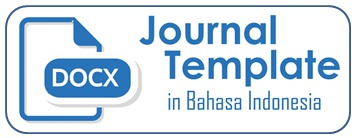MIGRASI MEDIA TELEVISI MAINSTREAM KE DIGITAL
Televisi Lokal Siap Menyambut Analog Switch Off (ASO)
Abstract
Digital era has influenced most local television to retreat in media and also factors such as human resources and production financing are thing that hinder growth of local television in entering digital system. However, since the issuance of Law no. 32 of 2002 about Broadcasting, ownership of local television station in Indonesia is increasing. This law can be a rule as well as a protector for diversity of content and ownership of local television station in maintaining their existence. Local television existences have an important role in changing function of mainstream media, especially in raising local issues. The presence of local television expected to display regional culture, local event, or region identity, as well as live of surrounding public. Thus, local television can represent overall local cultural identity based on local wisdom while still existing with digital.
Downloads
References
Arikunto, Suharsimi. Prosedur Penelitian Suatu Pendekatan Praktik. Jakarta: Rineka Cipta, 2006.
Creswell, John W. Penelitian Kualitatif & Desain Riset. Yogyakarta: Pustaka Pelajar, 2014.
Djamal, Hidajanto, and Andi Fachruddin. Dasar-Dasar Penyiaran. Jakarta: Kencana Prenada Media Group, 2011.
Gemiharto, Ilham. “Teknologi 4G-Lte Dan Tantangan Konvergensi Media Di Indonesia.” Jurnal Kajian Komunikasi 3, no. 2 (2015): 212–20. https://doi.org/10.24198/jkk.vol3n2.10.
Hutabarat, Daniel P. “Tinjauan Terhadap Model Bisnis Penyelenggaraan Penyiaran Tv Digital.” ComTech: Computer, Mathematics and Engineering Applications 5, no. 1 (2014): 485–94. https://doi.org/10.21512/comtech.v5i1.2642.
Lister, Martin. New Media: A Critical Introduction. London: Routledge, 2003.
Morissan, Morissan. Periklanan, Komunikasi Pemasaran Terpadu. Jakarta: Ramdina Prakarsa, 2004.
Mubarok, Mubarok, and Made Dwi Adnjani. “Strategi Sosialisasi Migrasi Sistem Penyiaran Analog Ke Digital Di Jawa Tengah.” Jurnal ASPIKOM 3, no. 4 (2018): 755–66. https://doi.org/10.24329/aspikom.v3i4.215.
Nurasih, Wiji, Mhd. Rasidin, and Doli Witro. “Islam Dan Etika Bermedia Sosial Bagi Generasi Milenial: Telaah Surat Al-’Asr.” Al-Mishbah: Jurnal Ilmu Dakwah Dan Komunikasi 16, no. 1 (July 9, 2020): 149–78. https://doi.org/10.24239/al-mishbah.Vol16.Iss1.194.
Nurudin, Nurudin. Pengantar Komunikasi Massa. Jakarta: Raja Grafindo Persada, 2011.
Oramahi, Hasan Asy’ari. Jurnalistik Televisi. Jakarta: Erlangga, 2015.
Prabowo, Agung. “Era Penyiaran Digital: Pengembangan Atau Pemberangusan TV Lokal Dan TV Komunitas?” Jurnal ASPIKOM 1, no. 4 (January 21, 2012): 301–14. https://doi.org/10.24329/aspikom.v1i4.27.
Rachman, Abdul. Dasar-Dasar Penyiaran. Pekanbaru: Unri Press, 2016.
Rasidin, Mhd., Doli Witro, Betria Zarpina Yanti, Rahma Fitria Purwaningsih, and Wiji Nurasih. “The Role of Government in Preventing the Spread of Hoax Related the 2019 Elections in Social Media.” Diakom: Jurnal Media Dan Komunikasi 3, no. 2 (December 15, 2020): 127–37. https://doi.org/10.17933/diakom.v3i2.76.
Respati, Wira. “Transformasi Media Massa Menuju Era Masyarakat Informasi Di Indonesia.” Humaniora 5, no. 1 (2014): 39–51. https://doi.org/10.21512/humaniora.v5i1.2979.
Sugiyono. Metode Penelitian Kuantitatif, Kualitatif, Dan R & D. Bandung: Alfabeta, 2013.
Sukmadinata, N.S. Metode Penelitian Pendidikan. Bandung: Remaja Rosadakarya, 2011.
Syahputra, Iswandi. “AGAMA DI ERA MEDIA: Kode Religius Dalam Industri Televisi Indonesia.” ESENSIA: Jurnal Ilmu-Ilmu Ushuluddin 17, no. 1 (2016): 125–38. https://doi.org/10.14421/esensia.v17i1.1283.
Syaidah, Syaidah. Kebijakan Migrasi Siaran Televisi Analog Ke Televisi Digital. Bandung: Balai Pengkajian dan Pengembangan Komunikasi dan Informatika Bandung (BPPKI Bandung), 2013.
Takariani, C. Suprapti Dwi. Penyiaran Digital: Tantangan Masa Depan Televisi Lokal. Bandung: Balai Pengkajian dan Pengembangan Komunikasi dan Informatika Bandung (BPPKI Bandung), 2013.
Wahyudi, Hendro Setyo, and Mita Puspita Sukmasari. “Teknologi Dan Kehidupan Masyarakat.” Jurnal Analisa Sosiologi 3, no. 1 (2018): 13 – 24. https://doi.org/10.20961/jas.v3i1.17444.
Witro, Doli. “Maqashid Syari’ah as a Filter of Hoax through Al-Quran Perspective.” Jurnal Ilmiah Al-Syir’ah 18, no. 2 (2020): 187–200. https://doi.org/10.30984/jis.v18i2.1133.
———. “Urgency Rijalul Posting in Preventing Hoax: Quranic Perspective.” Islamic Communication Journal 5, no. 1 (2020): 38–49. https://doi.org/10.21580/icj.2020.5.1.5451.
Yusuf, Muhamad, Mira Zuzana, and Doli Witro. “Literacy Education Urgency for Centennial Generation in Industrial Revolution 4.0.” Paedagogia: Jurnal Pendidikan 9, no. 2 (November 24, 2020): 1–14. https://doi.org/10.24239/pdg.Vol9.Iss2.61.
Copyright Notice
Komunikasia: Journal of Islamic Broadcasting and Communication is under the Creative Commons Attribution 4.0 International (CC-BY 4.0) License, according to which:
1) Authors retain copyright and grant the journal the right to first publication, with the work simultaneously licensed under the Creative Commons Attribution (CC-BY 4.0) that allows the sharing of articles published with the acknowledgment of authorship and the initial publication in this journal.
2) The authors are authorized to make additional contracts separately for distribution of the version of the work published in this journal (for example, publication in an institutional repository or as a chapter of the book), as long as there is recognition of authorship and initial publication in this journal.
3) Authors are authorized and encouraged to publish and distribute their work online (for example, in institutional repositories or on their personal pages) at any time before or during the editorial process, as it increases the impact and reference of the published work.



















